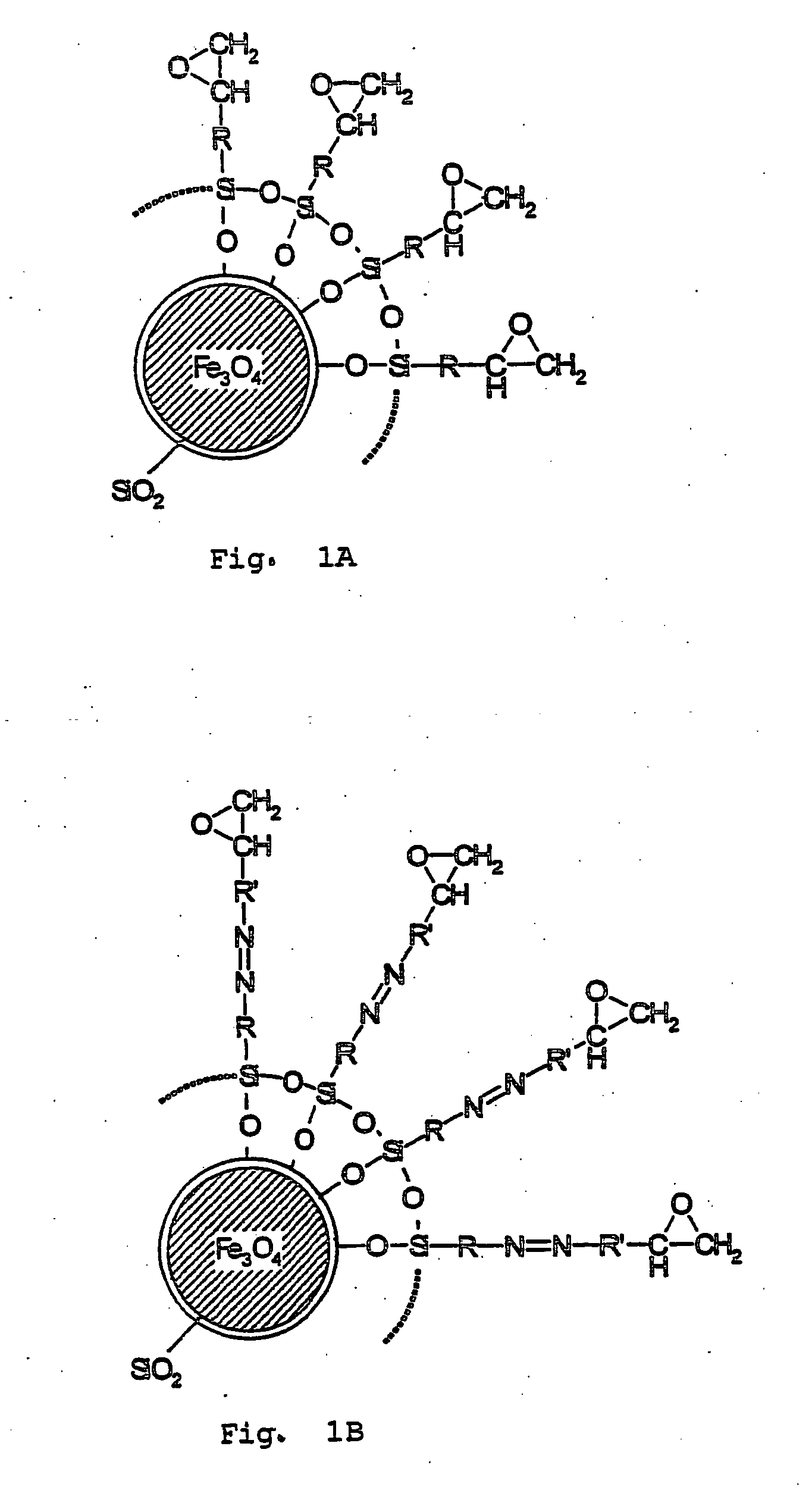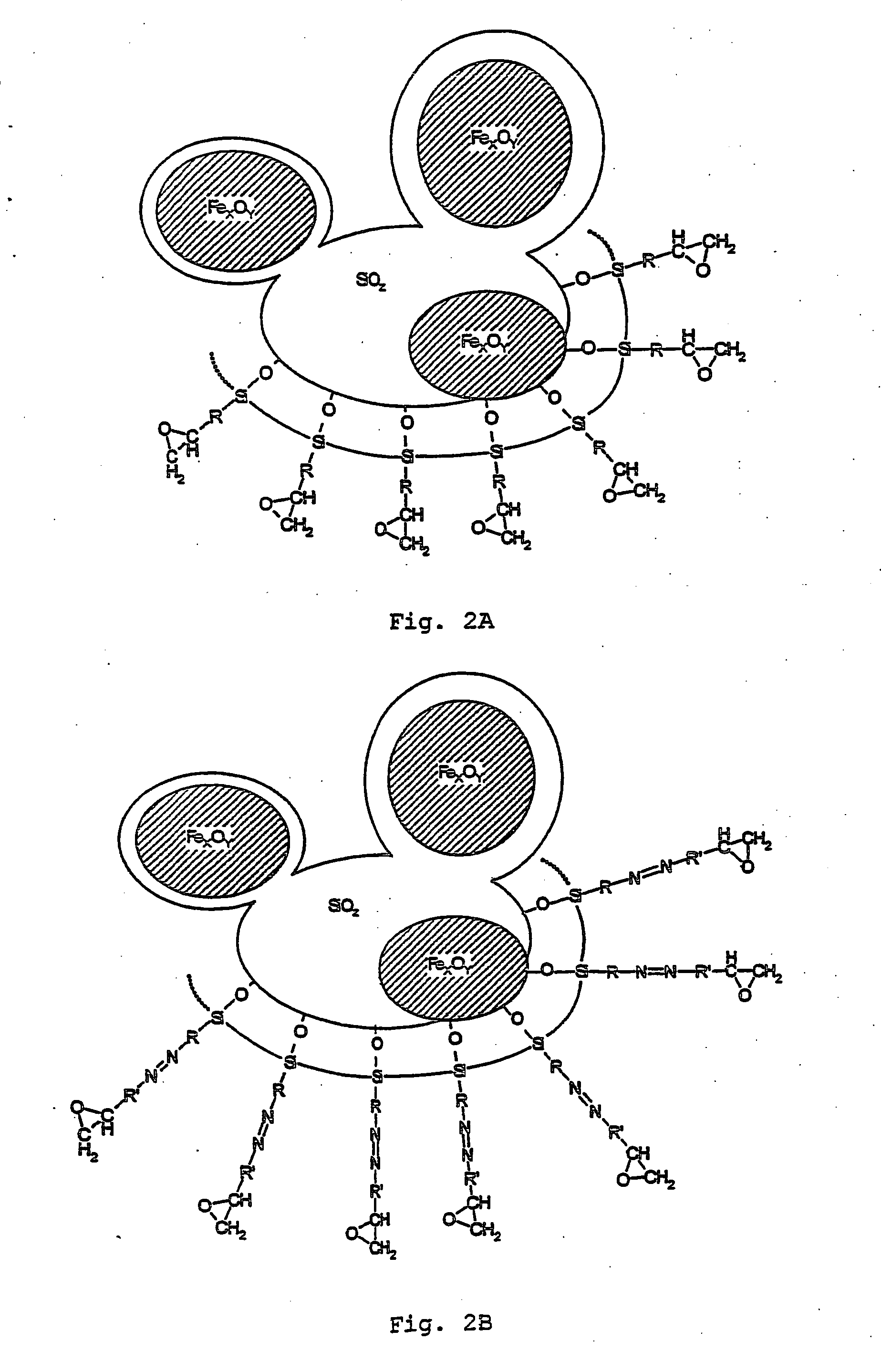Curable bonded assemblies capable of being dissociated
a bonded assembly and dissociation technology, applied in the field of adhesive bonds, can solve the problems of high environmental pollution, general dissociation of bonded joints based on hard adhesives, and inability to transmit the high force necessary, so as to avoid the inevitably suffering of long-term resistance of the adhesive join
- Summary
- Abstract
- Description
- Claims
- Application Information
AI Technical Summary
Benefits of technology
Problems solved by technology
Method used
Image
Examples
example 1
Curing and Dissociation of a Bonded Joint with Inductively Excitable Filler Particles Bound to a Crosslinking Agent
[0064] 1a) Nanoscale Magnetite Coated with Silicon Dioxide
[0065] 43.3 g of iron(III) chloride hexahydrate are dissolved in 370 ml of water and freed from dissolved oxygen by passing nitrogen through the solution. 15.9 g of iron(II) chloride tetrahydrate are added and a solution of 25.6 g of sodium hydroxide in 100 ml of water is added dropwise within 2 hours, with stirring, with a precision glass stirrer under a flowing stream of nitrogen. A finely particulate black precipitate of Fe.sub.3O.sub.4 is thereby formed. A solution of 22 g of Na.sub.2Si.sub.3O.sub.7 (annealing loss 17 wt. %) in 80 ml of hot water is then added dropwise within 30 minutes. The silicic acid is now precipitated, with further stirring, by slow dropwise addition of hydrochloric acid (14 ml of 37% hydrochloric acid made up to 50 ml with water). The precipitate is filtered and made into a slurry five...
example 2
Bonded Joint that Can be Dissociated by an Inductively Excitable Blowing Agent
[0072] 2a) Formulation from Magnetite Powder and Blowing Agent
[0073] 20 g of the material produced according to la) (residual moisture of the filter cake 40%) or a nanoscale magnetite powder obtained from another source is suspended in 100 ml of ethanol and 20 g of oxy-bis(benzosulfohydrazide) are added as blowing agent. The mixture is heated for 4 hours at 70.degree. C. with stirring, and the solvent is then removed on a rotary evaporator. The dry formulation is ground in a ball mill for 5 minutes and then screened. The fraction with a grain size of nominally less than 63 .mu.m is used for the further tests.
[0074] 2b) Incorporation of the Formulation from Example 2a) in an Adhesive
[0075] 8 g of 3,4-epoxycyclohexylmethyl-3',4'-epoxycyclohexane-carboxylate-, 2 g of poly(tetrahydrofuran) of M.sub.n=250, 0.1 g of (tolylcumyl) iodonium tetrakis (pentafluorophenyl) borate and 0.04 g of ascorbic acid-6-hexadecan...
example 3
Dissociation of a Glass Bond Based on an Adhesive with Inductively Excitable Blowing Agent
[0079] 3a) Formulation from Composite Particles Produced by Flame Pyrolysis and a Binder
[0080] 25 g of nanoscale composite particles produced by flame pyrolysis and consisting of silicon dioxide and iron oxide having the properties shown in Table 1 are suspended in 100 ml of ethanol and 20 g of oxy-bis(benzosulfohydrazide) are added as blowing agent. The mixture is heated for 5 hours at 60.degree. C. with stirring, and the solvent is then removed on a rotary evaporator. The dry formulation is ground in a ball mill for 3 minutes and then screened. The fraction with a grain size of nominally less than 63 .mu.m is used for the further tests.
[0081] 3b) Incorporation of the Formulation from Example 3a) in an Adhesive, and Adhesive Tests
[0082] 300 g of the moisture-hardening one-component polyurethane adhesive Dinitrol PUR 501 FC (Dinol GmbH) are modified in a Planimax (Molteni) mixer provided with k...
PUM
| Property | Measurement | Unit |
|---|---|---|
| Particle size | aaaaa | aaaaa |
| Particle size | aaaaa | aaaaa |
| Temperature | aaaaa | aaaaa |
Abstract
Description
Claims
Application Information
 Login to View More
Login to View More - R&D
- Intellectual Property
- Life Sciences
- Materials
- Tech Scout
- Unparalleled Data Quality
- Higher Quality Content
- 60% Fewer Hallucinations
Browse by: Latest US Patents, China's latest patents, Technical Efficacy Thesaurus, Application Domain, Technology Topic, Popular Technical Reports.
© 2025 PatSnap. All rights reserved.Legal|Privacy policy|Modern Slavery Act Transparency Statement|Sitemap|About US| Contact US: help@patsnap.com


